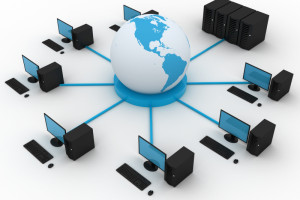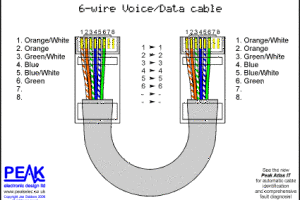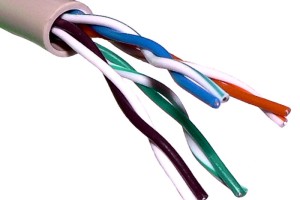CAT5 vs CAT5e vs CAT6
There are so many different kinds of cable on the market for transmitting data, that it can be quite difficult to discern which is best for your particular project. This article will deal with the similarities and differences between Category 5 (CAT5) cable, Category 5e (CAT5e) cable, and Category 6 (CAT6).
All of these are twisted-pair copper cable that is used to carry signals. They are most often used in computer networks, but can also be used to move data in home theatre applications. Every cable on the market has product standards set by the Telecommunication Industry Association and the Electronic Industries Association. These three cables have very similar guidelines and differ mostly in their performance level.
CAT5 cable is the most common, and comes in two types — Unshielded Twisted Pair, known as UTP, and Screened Twisted Pair, called SCTP. The SCTP cable has an extra shield to limit outside interference, and is generally only used in Europe. UTP cables are used all over the states and come either solid or stranded. Solid CAT5 cables are stiff and the best choice for long distance transmissions. Stranded CAT5 is more bendy and is often used as patch cable. The standard amount a CAT5 cable can handle is 100MHz, with the option for 10 or 100 Mbps Ethernet. A CAT5 cable can also carry more than one signal — such as two phone lines and a single 100BASE-T channel in one cable.
CAT5e is very similar to CAT5, the ‘e’ standing for enhanced. This cable has more ability for data transmission, with the option to transfer data at 1000 Mbps. Cat5e can also be used with Gigabit Ethernet and generally has less near-end crosstalk, or NEXT than standard CAT5 cables. When installing a new system, CAT5e cables are almost always used over CAT5, though most existing installations are still CAT5.
The most sophisticated of the three cables is CAT6. Although it is also comprised of four pieces of twisted pair copper wire, it has a longitudinal separator. This allows the cables to be separated from each other and, in turn, allows not only for an increased data transfer speed, but less crosstalk and double the bandwidth. CAT6 cabling is a good choice for most new systems, especially those that are evolving and might need more options in the future. CAT6 is perfect for 10 Gigabit Ethernet and can work at up to 250 MHz. The really intelligent aspect of CAT6 is that it is compatible with already installed CAT5 and CAT5e cabling.
With the ever-changing landscape of technology, when you are installing a new system, the best choice for an easily adaptable future is CAT6. However, CAT6 is more expensive, and often some companies just don’t need anything quite that sophisticated. If you are just wanting to expand your network a bit, CAT5e is a more cost-effective and the simpler choice. CAT5, though perfectly adequate for many existing systems, will just not be able to keep up with the speed and performance needs of tomorrow.




